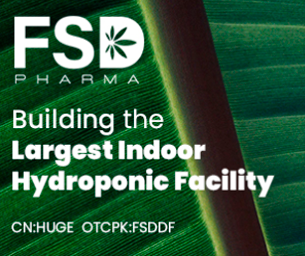U.S, May 28, 2020 (CANNABISTECH) Patented RF technology shows promise for cannabis and hemp decontamination.
Surviving in the cannabis regulations can be a real doozie. Even vigilant cultivators occasionally have to deal with yeast, and other pathogens, which make a crop unsellable. Remediation usually means a loss of terpenes or potency, but Ziel has secured the first patent for the innovative process of microbial reduction through radio frequency technology.
USING RADIOFREQUENCY IN COMMERCIAL CANNABIS
From Colorado to Califonia and Canada, Ziel’s Apex is in use by leading companies as a processing solution. Radiofrequency technology is preferable to other forms of processing because it can retain up to 95% of terpenes. Additionally, the Apex has a 0% loss or conversion rate for THC. There’s no decarboxylation in the samples, and it maintains moisture within half a percent. Radiofrequency treatments for microbial life shows many advantages compared to alternate methods of removing pathogens.
Another perk comes from the simplicity and efficiency of the Apex unit. It’s a turn-key device, meaning it’s ready after being set up. After securing the cannabis in the machine, hook up six fiber optic temperature probes into the herb. Press a button to start the Apex; then, it processes up to 20 pounds of cannabis to regulation standards within fifteen minutes.
For those growing outside, or even those who occasionally run into some mold, radiofrequency treatment is an excellent option. It’s gentle enough to preserve the character of a cannabis strain while bringing it up to market standards.
HOW DOES RADIO FREQUENCY TREATMENT WORK?
Polar molecules, such as water molecules, are present in all cannabis strains. Radio frequencies that create an oscillating electromagnetic field between two electrodes can stimulate those polar molecules. By creating a radio frequency at 27.12 MHz, the Apex stimulates the polar molecules in cannabis to oscillate, thus increasing the heat within the sample. This heat is due to the rapid internal oscillation of the water molecules, which generates volumetric heat.
The probes placed into the cannabis at the beginning monitor the heat levels throughout the herb to make sure it maintains the appropriate standards. What makes for the sweet spot is a temperature warm enough to cook out the targeted pathogens while keeping most of the THC and terpene content. Radiofrequency processing is chemical-free.
After processing, cannabis treated by the Apex tests at less than 10,000 CFU/g of any targeted pathogen. Such performance ensures marijuana will be able to be sold on the market and profitably so. While this technology might seem too good to be true, it’s because it isn’t new. Radiofrequency technology has been used to kill pathogens in our foods for a decade. The inclusion of cannabis as another crop to treat with radiofrequency is not as innovative as it is health standards, finally making their way over to the cannabis industry.
In the future, radiofrequency treatment is poised to grow in popularity as a practical, affordable, and easy-to-use method of processing cannabis. It can be done pre- or post-cure and is non-toxic, non-ionizing, and non-oxidizing.
WHERE WILL RADIO FREQUENCY TREATMENT GO?
Los Suenos Farms, the largest outdoor grow in America, already works with Ziel to process their cannabis. While this technology is proven and trustworthy, Ziel is the most active voice in the implementation of radiofrequency treatment in the cannabis industry. However, the entrepreneurial side of this technology may not be the most exciting aspect.
Medicinal cannabis was developed initially for those suffering from awful conditions, such as cancer or epilepsy. Many of these people who deserve cannabis the most are also immunocompromised. The slightest exposure to a pathogen spells disaster in such cases. Being able to ensure that the majority of samples sold on the regulated market deserve to pass their tests is providing a needed medicine. Additionally, ensuring quality throughout the processing of that cannabis is creating superior medicine for a struggling population.
While profit is certainly a motivating principle for any innovation, radio frequency technology is not only profitable but necessary. The adoption of it throughout the industry is more of an inevitability than an option. With an origin in food processing, there’s little to do to avoid such innovations as the Apex from pouring over into the cannabis world. Due to being an agricultural industry, cannabis will always be downstream from techniques used in agricultural processing. The same is true with cannabis being downstream from the pharmacological world, which also requires uniform sterility. Radiofrequency treatment promotes both the preservation of quality and sterility.







